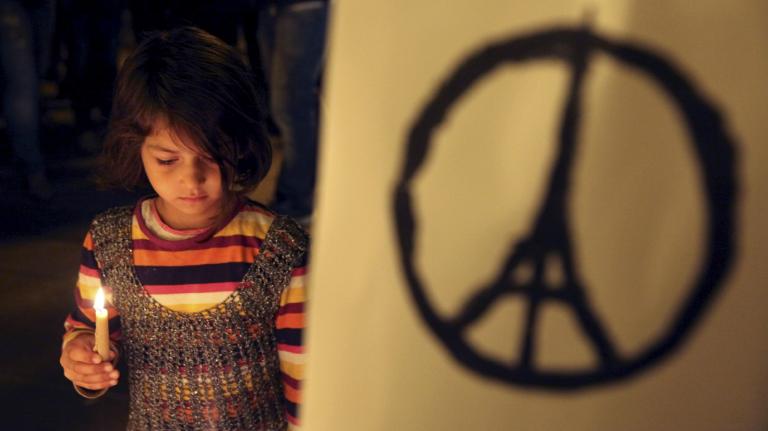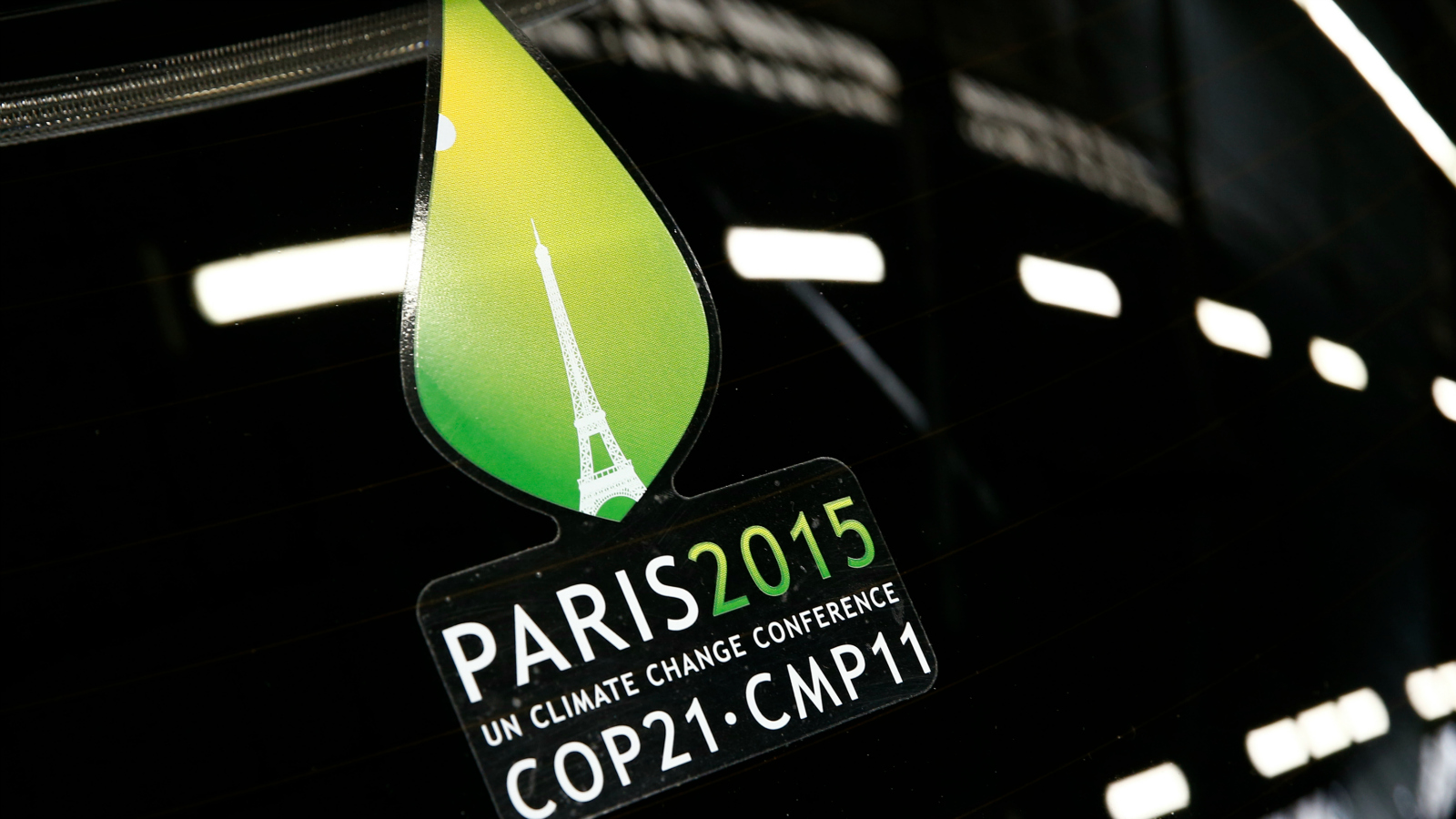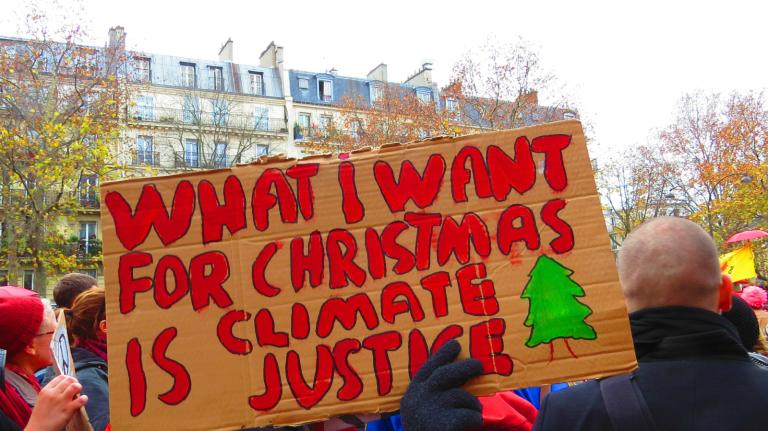Heads of state from around the world will be getting the headlines as they go to Paris, just two weeks after terrorist attacks struck the city, to discuss a global agreement to fight climate change. Of course, most of the real negotiating won’t be done by presidents or prime ministers, but by sub-cabinet officials on their respective negotiating teams.
Among the multitudes arriving for the Conference of Parties (COP 21) is a less discussed but vitally important group: environmental activists. Referred to in the international community as “civil society,” or non-governmental organizations (NGOs), these groups are credentialed by the United Nations to attend the talks. The major American environmental NGOs are rolling to Paris with teams eight or nine deep.
They will be participating in activism outside the conference center, led by their French counterparts, but the main focus for many will be the inside game. American climate activists will be on site every day, acting in roughly the same capacity as lobbyists on Capitol Hill. They will be there to push our government and others to adopt a strong agreement, even helping to broker compromises.
There are three main things NGOs will be lobbying for an agreement to include:
1. Strong long-term targets.
“There are a few key indicators that we’ll be pushing for with allies,” says Jamie Henn, a spokesman for 350.org. “One is a long-term goal that would pop up throughout the text. That’s limiting warming to 2 degrees [Celsius] and related goals like moving to 100 percent renewable energy.”
Over the past few months, countries have made individual pledges on what actions they intend to take, called Intended Nationally Determined Contributions, or INDCs. As it stands right now, the pledges countries are bringing to Paris will put the world on track for between 2.7 and 3.5 C of warming above pre-industrial levels. (The gap there has to do with what you assume countries would do after 2030, when the pledges run out.) The Intergovernmental Panel on Climate Change warns that at around 2 C we’ll begin a cascade of devastating effects. It’s not realistic to think that countries will substantially increase their current pledges, so the Paris agreement itself won’t forestall dangerous levels of warming; it’s only a first step on the road. But getting countries to universally embrace the goals of keeping warming below 2 C and shifting to 100 percent renewable energy by 2050 is still important to activists because of the effect it may have on the media narrative and the business and political communities.
“Our main goal is that Paris send a clear signal that the world is moving away from fossil fuels,” says Henn. “That can strengthen the divestment fight. Investors can wake up after Paris and realize they have to pull their money out of fossil fuels, which will remove carbon bombs like Keystone XL or leasing coal in the Galilee Basin in Australia.”
2. A “ratchet” mechanism for strengthening the targets.
If you get countries to say they want only 2 C of warning but they’re agreeing to a path to 2.7 C or more, then the next obvious question becomes, how do you close that gap? The answer is through future agreements where everyone commits to stronger emission-reduction targets. Activists want the Paris agreement to include a regular schedule for revisiting pledges and targets, referred to as a “ratchet” mechanism, because it would ratchet down the emissions targets over time. Most countries’ INDCs cover their actions through 2030, but climate hawks want to see them come back to the table much sooner than that, starting at around five years from now. If countries don’t step up and do more before 2030, staying below 2 C will be nearly impossible. After several years of everyone showing that they are working in good faith to achieve their targets, and watching renewable energy prices keep dropping, countries may be more willing to make bigger commitments.
“We know that these targets are not going to be sufficient by 2030 to put us on the right path,” says Jake Schmidt, director of the international program at the Natural Resources Defense Council. “So what kind of signal are countries sending to make sure that’s the floor not the ceiling? Basically, it comes down to we need to have a political moment before 2030, we would say by 2020 at the latest, where countries reevaluate their targets and realize they can improve them.”
3. Funding to help poorer countries.
It’s one thing for rich, developed countries to say they’ll cut their emissions, especially because it doesn’t have to hurt their economies. But it’s much more challenging for poor countries to build a clean energy system while lifting their people out of poverty and bringing reliable electricity to the many who don’t have it. If poorer nations are to ramp up their their renewable energy capacity and develop in a green way while trying to adapt to the climate changes that are already happening, they’re going to need a lot of financial assistance to do so. Since the Copenhagen climate talks of 2009, the international community has been talking about raising $100 billion a year by 2020 to help developing countries cope with climate change, but few individual rich nations have ponied up much so far or pledged specific amounts that would add up to that. Activists will be pressing them to do so in Paris.
Of course, what activists ask for doesn’t matter if governments won’t listen. But green groups say they are able to influence delegations’ thinking by convincing them that more aggressive climate action is in their nation’s interest. For example, they would tell the U.S. team that Obama won’t really have won the climate victory he seeks unless the agreement includes certain provisions. “Obama has signaled that he wants climate action to be part of his legacy,” notes Naomi Ages, an attorney and climate campaigner with Greenpeace. “Well, then that means he has to push for full transition to renewable energy.”
And they can make that kind of case to foreign governments as well. “When we would talk to the Chinese about this [2020] review, we would say, ‘Look, there’s a chance you’ll be peaking your emissions well before 2030, don’t you want to get full credit from the international community for your contributions?’” says Schmidt. “You get them to see the upside.”
Along with those carrots, the climate activists come armed with sticks. When countries take an obstinate position, activists can target them with embarrassment and peer pressure through press releases and press conferences. “We’ll be naming a ‘fossil of the day,’” says Henn. “People get really mad, because COP is like a high school and you’re putting the dunce cap on someone.”
There are also grassroots efforts to apply pressure. Although rallies in Paris itself have now been forbidden in the wake of the terrorist attacks, green groups are circulating petitions calling for a strong agreement. They will also be holding rallies in capitals around the world on Nov. 29 and advertising in the media in those markets. Other events in Paris, like the “Village of Alternatives” that will showcase sustainable, people-powered solutions to energy challenges, will go on as planned.
Those acting as lobbyists at COP can also play a middleman role. While negotiators are stuck in rooms with their colleagues, lobbyists roam the hallways and are often actually better informed as to rival camps’ negotiating positions. “Negotiators don’t always talk to everyone, don’t always know what everyone’s thinking,” notes Schmidt. “So part of it is to say, ‘So-and-so is considering this as a middle ground, how’s that?’” Schmidt emphasizes that they aren’t in the business of helping to hammer out a deal for its own sake: they have a viewpoint and they aren’t going to offer up compromises that they don’t support. But they’re especially well-positioned to serve as facilitators because in some progressive developed countries NGO staffers are actually part of the national negotiating teams, and in many developing nations they are relied upon for their expertise. So American climate activists will come to Paris with strong relationships with colleagues that can help them bring mutually suspicious governments together. And those governments are going to need all the help they can get.



